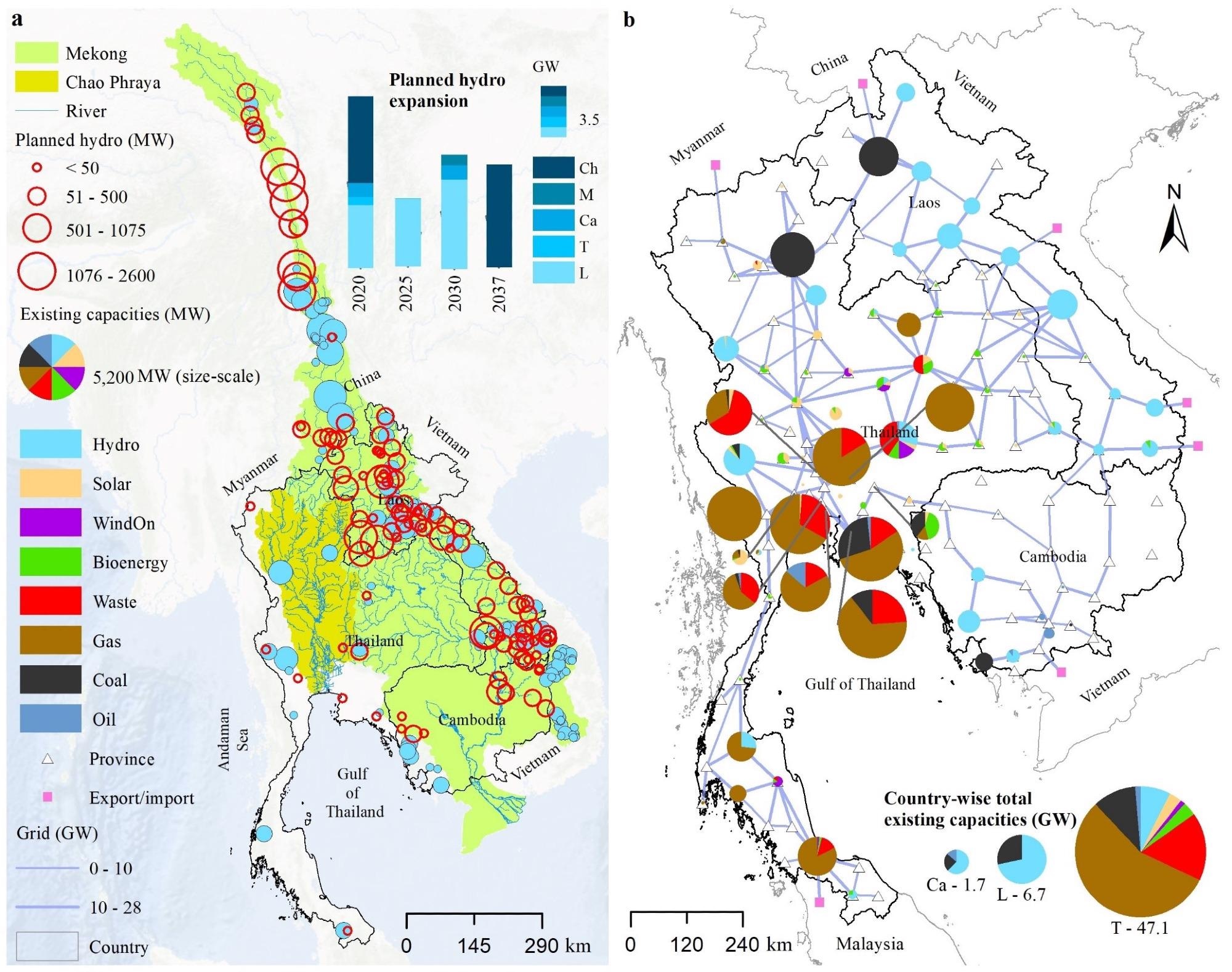For many countries in Southeast Asia, huge hydropower plants are considered a key source of clean and inexpensive electricity. Yet, dams tend to affect the environment and pose dreadful impacts to local communities.
 Full spatial extent of the Chao Phraya and Mekong basins, together with the existing and planned dams (left). Spatial representation of the power system infrastructure for each province of Thailand, Laos, and Cambodia (right). Circles, segments, and squares represent generation sources, high-voltage transmission lines, and import/export nodes. Image Credit: Singapore University of Technology and Design.
Full spatial extent of the Chao Phraya and Mekong basins, together with the existing and planned dams (left). Spatial representation of the power system infrastructure for each province of Thailand, Laos, and Cambodia (right). Circles, segments, and squares represent generation sources, high-voltage transmission lines, and import/export nodes. Image Credit: Singapore University of Technology and Design.
Therefore, constructing additional dams will be a major compromise between environmental protection and electricity supply. A research group from Singapore has proven that both these challenges could be separated. Their study proposes more viable pathways to a clean energy future.
The study titled “Solar energy and regional coordination as a feasible alternative to large hydropower in Southeast Asia,” has been published in the Nature Communications journal.
The research group headed by Dr. Stefano Galelli from the Singapore University of Technology and Design (SUTD) has developed high-resolution mathematical models based on the Thai, Laotian, and Cambodian power systems. The models illustrated that CO2 emission targets and the electricity demands in the future could be satisfied using fewer hydropower dams compared to what has been planned.
The researchers identified that only 82% of the planned dams in the Mekong River basin are required. The Mekong basin constitutes a major biodiversity hotspot. Also, it would be viable to stop the construction of all scheduled dams without affecting the electricity cost.
The explanation behind these results lie in the cost and flexibility of other renewable technologies. The decreasing cost of solar energy is an essential factor of sustainable energy plans. Moreover, solar photovoltaic modules have the advantage of being scalable and deployable in any province of the Mekong countries.
Dr. Kais Siala, TUMCREATE Ltd
We have tangible opportunities for rethinking our regional energy plans. So far, we have often prioritised the construction of big dams over the protection of our ecosystems. New technologies and their dropping costs provide us with concrete options for resolving this long-standing issue.
Dr. Stefano Galelli, Singapore University of Technology and Design
These observations are useful for many other countries that have been trying to fulfill their energy demands without any harmful effects on their natural environment. There are several free-flowing rivers from Southeast Asia to South America dammed to generate electricity. Advancements in the power market could help bring changes in the field.
Journal Reference:
Siala, K., et al. (2021) Solar energy and regional coordination as a feasible alternative to large hydropower in Southeast Asia. Nature Communications. doi.org/10.1038/s41467-021-24437-6.